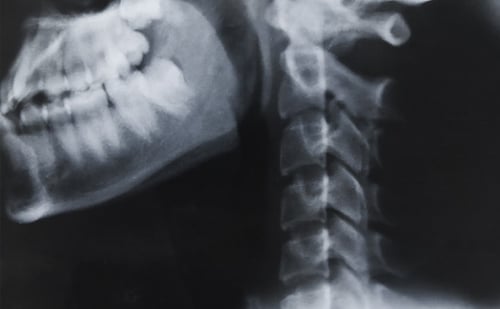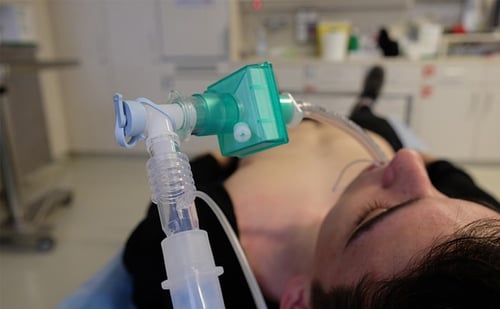C1 & C2 Spinal Injuries
Injuries to the first cervical levels of the spine are considered to be the most severe of all spinal cord injuries.

Injuries to the first cervical levels of the spine are considered to be the most severe of all spinal cord injuries.
The C1 and C2 vertebrae are the first two segments in the cervical spine. These levels of the spinal column are especially important due to their location and functions. A C1 through C2 vertebrae injury is considered to be the most severe of all spinal cord injuries as it can lead to full paralysis—but is most often fatal.
Depending upon their severity, these types of spinal cord injury are either categorized as complete or incomplete.

The C1 vertebra is the first of seven vertebrae in the cervical region. It is connected to the head and leads into the C2 vertebra.
As C2 spinal vertebra is the second of the seven cervical vertebrae and follows the C1 vertebra. As the first two segments in the cervical spine, the C1 and C2 vertebrae support the head.
The C1 vertebra is also known as Atlas, with the C2 vertebra named the Axis. While the C1 Atlas vertebra is named after the Greek titan who supported the weight of the world in myth, the C2 axis vertebra is labelled because of its purpose of motion: the atlas vertebra pivots on the axis vertebra, which allows the head to rotate.
The C1 and C2 vertebrae are also responsible for allowing the head to rotate and swivel since the atlas C1 is directly attached into the skull and pivots from the C2 axis.
The C1 and C2 vertebrae are part of the seven vertebrae that make up the cervical column that supports the neck and head. Although the cervical vertebrae are some of the smallest, they have to support the weight of the head and protect the spinal cord, the bundle of nerves that relays messages between the brain and the rest of the body.
The C1 and C2 vertebrae are uniquely shaped and have vertebral foramen (spaces within the bone) which allow the vertebral arteries and veins to reach through to the brain and supply it with blood. This unique formation is only seen in the cervical vertebrae.
The role of the cervical vertebrae is to support the neck and head, as well as protect the spinal cord from injury. Types of spinal cord injury to the cervical vertebrae are so severe because the higher the injury on the spinal cord, the more damage and loss of function the individual will experience.
Since the C1 and C2 vertebrae are the most high up, they are very important for supporting the skull, allowing for the head to rotate, and protecting the spinal cord. If they become damaged, then the nerves carrying messages from the brain to the rest of the body are also affected.
The C1 and C2 vertebrae function together to give your head flexibility. With the atlas and axis relationship, you are able to swivel and rotate your head, as well as support your head. These two vertebrae are more responsible for the head’s rotational range of motion than from any other joint.
Although injuries can occur at this level, they are not very common. Medical professionals see more injuries to the C4 and C5 area. The most frequent cause of a C1 spinal fracture is diving, followed by vehicular accidents, and then falls that impact the head.
Other common ways to sustain a cervical vertebrae injury are:

Patients that survive a C1 through C2 Vertebrae Injury will likely have the following symptoms:
Since these vertebrae are so high up on the spinal cord, a C1 through C2 vertebrae injury is considered the most severe. Injuries here have the potential to remove impulses to the rest of the body below that point. Due to their position on the spinal column, having a C1 or C2 vertebrae out of place, or an injury such as a spinal fracture, most often either leads to death or complete paralyzation.
In addition to the injury, any interference at the C1 and/or C2 level can cause the vertebral arteries to inflict neurological damage, leaving the brain without a vital source of blood.
Symptoms following a cervical vertebrae injury to the atlas C1 and axis C2 may include:
Treatment options for vertebrae injury at the C1 and C2 levels will not reverse the damage. Survivors of cervical spinal cord injuries at this level will likely require assistance for the remainder of their lives. Treatments are done to provide symptom relief, prevent further spinal cord damage, and to aid the patient in using the remaining function of their body.
Current treatments for C1 and C2 SCIs include:
The outlook of a person’s recovery from a cervical vertebra injury depends on a variety of factors, including:
Powered wheelchairs can also help people with a C1 through C2 vertebrae injury get around since they are equipped with special assistive technologies that allow them to control the chair’s movement through unconventional means. However, people with these injuries will still require 24-hour care and assistance from family, friends, or a professional caregiver (or multitude of each).
Medical researchers are continuously looking for treatment options for spinal cord injury patients. The use of stem cells has shown promising results in regenerating function lost due to this debilitating injury. Injecting these cells into the injured spinal cord may improve overall function and aid in the recovery of the spinal cord. Although this research is still in its infancy, human patient studies have reported improved walking and sensory perception.
Spinal cord injuries are traumatic for patients and their families. They cause disruptive changes to every aspect of your life and there is a lot of new information to navigate and understand. Our experts have collected everything in one place to help you learn more about your injury, locate doctors and treatment centers, find financial support, and get assistance navigating your next move.
Sponsored by Tampa personal injury lawyers at Swope, Rodante P.A. a Florida law firm located at 1234 E 5th Ave, Tampa, FL 33605.
The information provided by SpinalCord.com is not a substitute for professional medical advice, diagnosis, or treatment, see Disclaimer Policy.